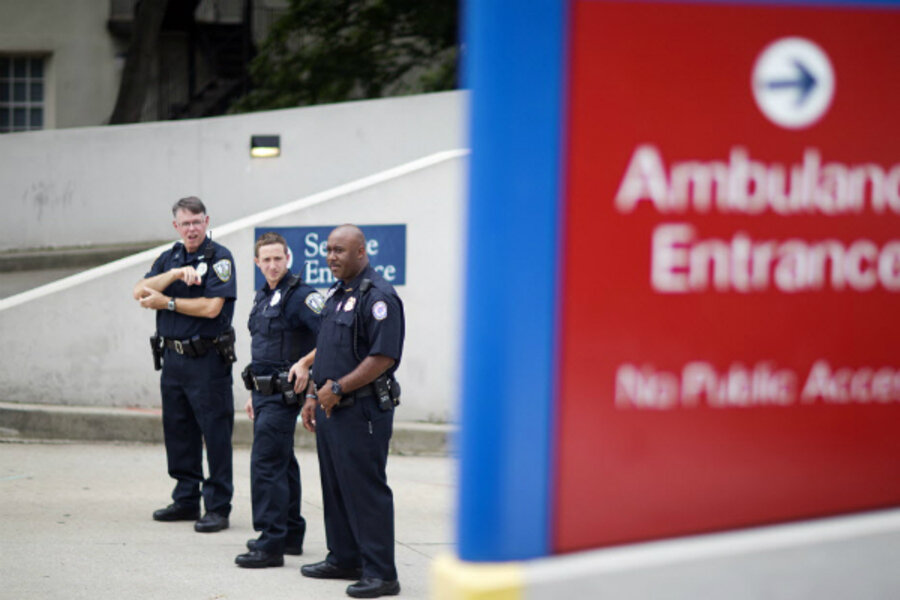First Ebola-stricken US aid worker arrives at Atlanta hospital
Loading...
| Atlanta
America’s vacillation between disease outbreak fears and resolve to bring its own home came into sharp focus Saturday morning as US health authorities, in a desperate attempt to save the lives of two US aid workers stricken by Ebola, flew Dr. Kent Brantly into Dobbins Air Force Base, just north of Atlanta.
Atlanta’s Emory University Hospital, with the assistance of the Atlanta-based Centers for Disease control, received Mr. Brantly, a father of two, on Saturday. A second American stricken by Ebola, Nancy Writebol, is scheduled to be flown to to the same Atlanta facility shortly.
The two aid workers belong to a North Carolina-based group called Samaritan’s Purse, which has been on the frontlines of trying to contain Africa’s worst-ever Ebola outbreak. Samaritan’s Purse on Saturday recalled 60 other aid workers from the region.
With his arrival in Atlanta today, Dr. Brantly will become the first Ebola patient to ever be treated on US soil, a fact that has raised concerns and forced health authorities to defend their decision to bring the dangerous virus to the US.
To be sure, that decision is facing serious questions: Should Americans fear an outbreak? How will the victim get from the airport to Emory University Hospital? Are the odds of saving a life greater than the odds of the virus breaking out of an isolation chamber in a dense city on the Appalachian piedmont?
“Why are they knowingly bringing infected people to the US when we could send medical supplies and medical staff to tend to them overseas?” commenter “SubVet418” writes Saturday on the Chicago Tribune’s website. “The comments from the CDC regarding Ebola not being easily contagious are not reassuring as they have recently had several breaches in their own labs.”
So far, health authorities, including CDC Director Tom Frieden, have worked to allay fears. They say Ebola, which in this latest outbreak has killed over 700 Africans in four countries, cannot be transmitted by air, only through directly contact with bodily fluids. What’s more, the isolation chamber at Emory University is designed specifically to contain similar kinds of viruses and protect the populace.
But it’s clear the CDC is on edge over the mission. The logistics of isolating a patient across thousands of miles of air space and then shuttle them to a hospital isolation unit are daunting. And the survival odds are stark: Only 4 in 10 afflicted people survive the Ebola virus, and a vaccine is at least a year away.
In comments on CNN Friday, Dr. Frieden said he hoped “irrational fears” wouldn’t override “compassion” for fellow citizens in dire need of help.
Moreover, health-care workers have shouldered some of the disease’s toll so far. Aside from the two infected American aid workers, Sierra Leone’s top infectious disease specialist perished last week from the virus, according to news reports. In some areas, health-care workers lack even basic protection, such as glasses and mask, to defend themselves from infection.
The World Health Organization has pledged $100 million toward helping the African nations contain the threat, and the CDC is sending 50 experts to the region to help coordinate a response that so far has failed to stem the outbreak.
The setup designed to treat the two patients at Emory is one of the most advanced isolation facilities in the world. The two aid workers will be treated by a team of four infectious disease doctors. The patients will be able to communicate with family through intercom, and will be able to see them through a plate glass window.








